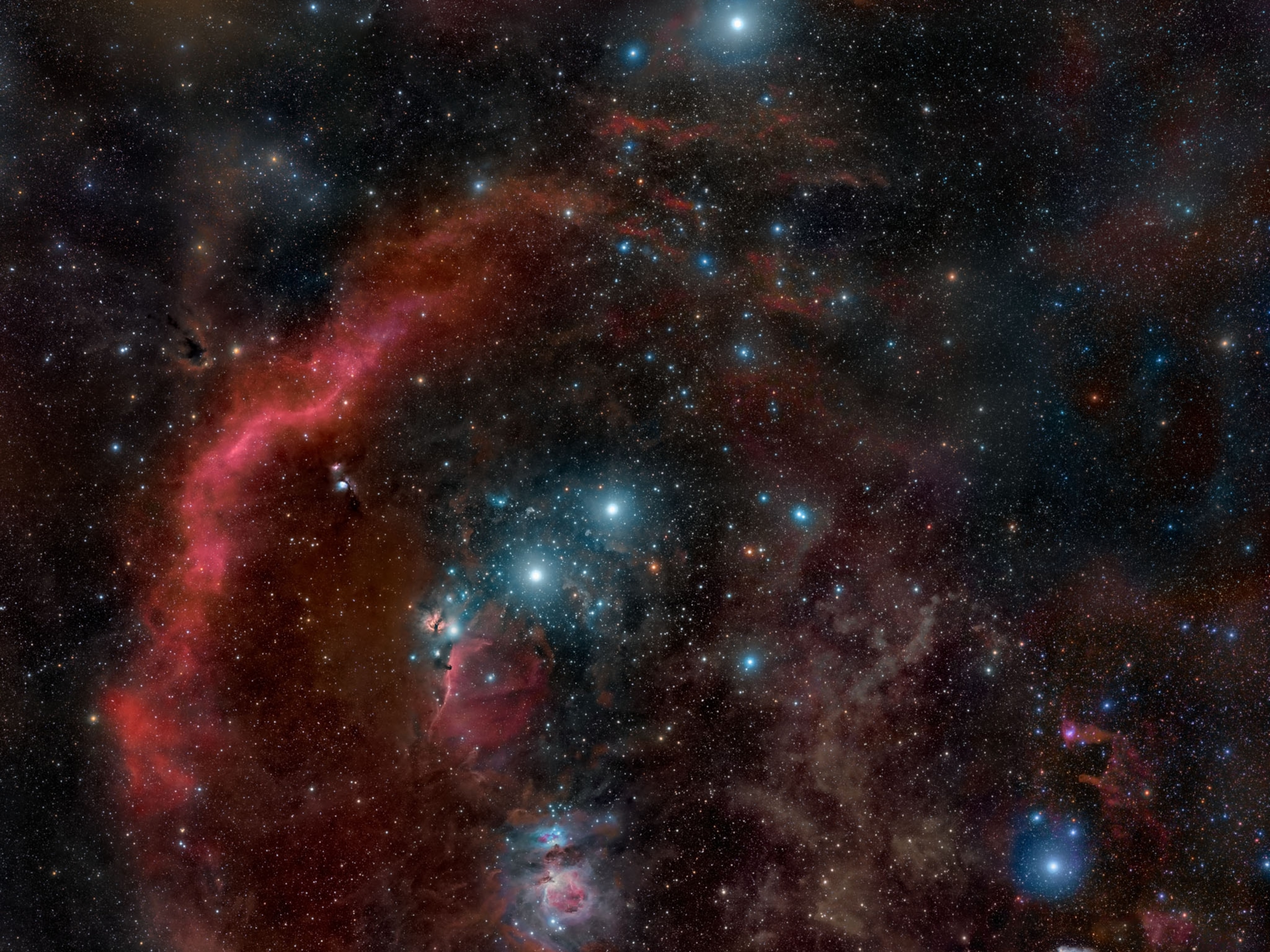
Superfast Stars Have Five-Minute Orbits
Binary pair circle each other at 310 miles a second, study confirms
Two extremely dense stars in an intimate dance are spinning around each other in just 5.4 minutes—making them the fastest known stellar partners in the galaxy, astronomers have confirmed.
To have such a speedy orbit, the stars must be moving at about 310 miles (500 kilometers) a second, the team calculates.
The whirling duo, known as HM Cancri, also has the tightest orbit of any known "binary" star system. (Related: "First Proof 'Tight' Double Suns Can Have Planets.")
Both stars are white dwarfs—the dense, white-hot remnants left behind when sunlike stars die. The stellar corpses are separated by no more than three times the width of Earth.
In such tight quarters, hot gases flow between the two stars, releasing huge amounts of energy.
"This is the most extreme example of one of these double white dwarf systems we have so far," said study co-author Danny Steeghs of the University of Warwick in the U.K.
Binary Stars' Tell-tale "Wobble"
Study leader Gijs Roelofs, of the Harvard-Smithsonian Center for Astrophysics, was part of the team that first detected periodic x-ray emissions from HM Cancri in 1999.
Initial observations had suggested a 5.4-minute orbit, but the researchers weren't sure if the pulses of light were coming from two circling stars or one superfast spinner. (Related: "Yearlong Star Eclipse May Help Solve Space Mystery.")
To confirm the stars' dizzying tango, Roelofs and colleagues turned to the world's second largest optical telescope, at the W. M. Keck Observatory in Hawaii, where they measured "wobbles" in the system's brightness.
(See pictures of the world's largest telescope, the Gran Telescopio Canarias, unveiled last August.)
"The amplitude of the wobble gives you an idea of the orbit period and the masses" of the stars, co-author Steeghs said.
What's more, light emissions from the stars were found to be moving in opposite directions, as such emissions would for two orbiting bodies, cinching the case for a binary system.
HM Cancri's record-breaking orbit couldn't get much quicker, Steeghs added, since the stars would merge if they got any closer, triggering a massive explosion known as a type Ia supernova. (Related: "New Type of Supernova Discovered.")
Overall, he said, three minutes would be the fastest a binary white dwarf system could get.
The findings appear in the March 10 issue of The Astrophysical Journal.





